Published in the Wilson County News on April 15, 2015
South Texas Living
OH, to be 100!
A place in History
A place in our hearts
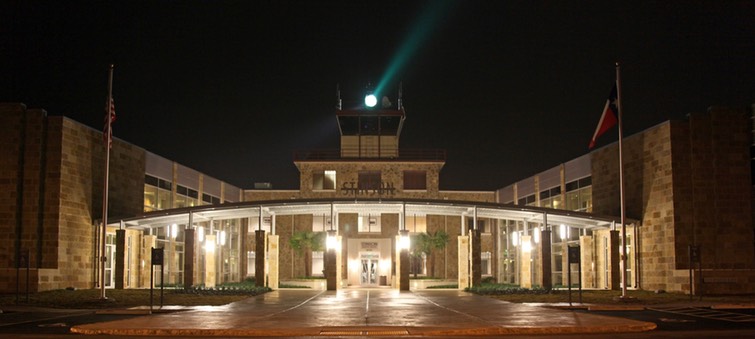
Everyday Journeys
Harry and Linda kaye Perez
When we hear the words, “one hundred years old” we automatically think of something ancient - the Alamo, the state Capitol building, both over one hundred years old. Rome, Paris and many more cities in Europe are even older. The pyramids in Egypt and the ancient cities of Peru and Mexico now abandoned, are even older.
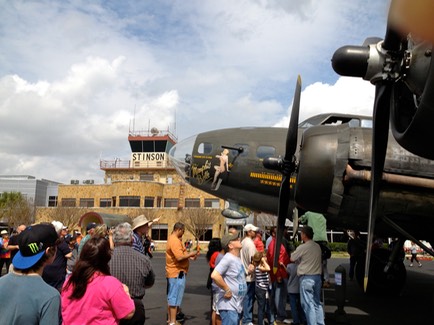
Many of us humans won’t reach 100, but when someone does, we honor them for they have achieved distinction. In the aviation world seldom do you hear anything being old since it is a relatively new adventure both in mind and spirit-we all wish we could soar like the eagle and leave our worldly cares behind - right?
South Texas is blessed with such distinction this year with the Stinson Municipal Airport reaching 100 years old. There is only one other airport in the United States that can make that claim, College Park Airport in Maryland. There were many other airfields that came and went during the last one hundred years, but only these two have survived the times, good and bad. And, hats off to those who established these historical airports or flew in and out of them, and made them what they are today.
Stinson has served the aviation community well and provided those services when desperately needed in times of crises and economic decline, and therefore impacting the overall community tremendously.

History Hatches
As it often occurs in history, the name for Stinson Field was simply because Marjorie Stinson, coming from a aviation minded family, was able to convince the San Antonio City Council to lease 500 acres to the family in order to further advance their efforts to promote their passion in aviation. The name stuck – Stinson Field.
Even tough Marjorie got things started, it was her younger sister Katherine who made the most impression on this young and growing adventure, the spirit of flight. She had not initially aspired to fly, but rather to become a musician. To finance the educational cost to achieve entry into that field, she found an opportunity to earn the money needed through the new sport of barnstorming.
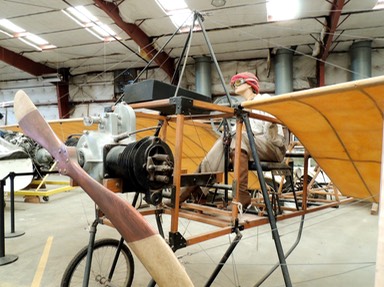
So, she learn to fly and in 1912 earned her pilot’s license becoming the fourth women in the U.S. to achieve such a feat in a field that, at the time, not many men had yet to reach. That was just the beginning. During her barnstorming days she was the first woman to perform the “loop” and to do it over 500 times without an accident. When Katherine’s family moved to San Antonio she continued to focus on the family's interest in aviation and along with her sister Marjorie established a flight school in 1915 on the property leased from the city of San Antonio. The flight school opened and Stinson Field was born. Their role in aviation history had an enormous impact on our society – progress of flight began right here in South Central Texas.
Taking Flight
Marjorie and Katherine trained over 80 American and Canadian pilots to fly during World War I. Eddie, their brother, went on to design and manufacture airplanes. In 1917, the U.S. involvement in the war imposed a ban on civilian flying, marking the end of the Stinson School of Flying, and the airport came under the control of the U. S. Army. Katherine volunteered to fly in the war, but was denied – in those days pilots had to be men. She never became a musician.
With the end of WWI in 1918, the City of San Antonio assumed control of the operation of the airfield. In the early 1930s, commercial airline flights began at Stinson and remained the only airport for commercial operations in San Antonio for many years.
During World War II, the U.S. Army Air Corps used Stinson as a training base and constructed over 100 hangar-type buildings, some of which are still standing. After WWII, all heavy commercial flights and airline operations moved to the new San Antonio International Airport. Stinson was once again returned to the City of San Antonio and began catering to private pilots, light commercial operations, and civilian aviation. Stinson Field was also the base of operations for many Civil Air Patrol (CAP) search and rescue missions in the 1960s and 1970s, and it still operates here today.
Stinson has seen its share of aviation superstars. Among the more famous pilots that have landed on the runways of this airport include: Charles Lindbergh, first to fly across the Atlantic Ocean non-stop; Douglas "Wrong Way" Corrigan; and more recently, Bud Anderson, WWII triple ace; and Chuck Yeager, WWII double ace and the first to break the sound barrier.
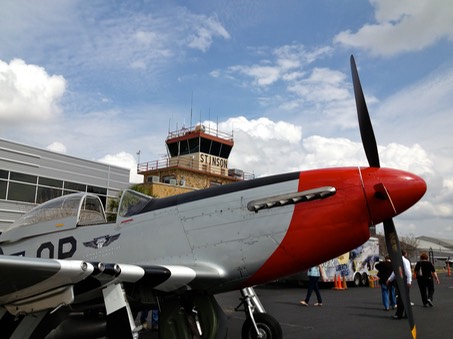
Still Soaring
Stinson Municipal Airport is turning 100 years old this year and while history may look at it as a relic from the past, Stinson continues to reinvent itself. The airport has gone through a series of retrofits in recent years, including the addition of office space, conference rooms, and the creation of an area for a restaurant or café. These additional facilities were very tastefully designed and blended well with the existing terminal building that was originally constructed in the 1930’s. One of the runways (9/27) was extended to accommodate jet traffic and the second runway (14/32) is being refitted to improve the runway lighting and to be able to accept heavier aircraft loads. Later this year Stinson will be receiving a brand new state-of-the-art control tower, funding coming from both the City of San Antonio and the Texas Department of Transportation. Construction is scheduled to begin this summer.
Future plans include the construction of additional hangars to accommodate the rapidly growing general aviation community. As we all know, progress usually leads to more progress and there is now talk of future development of the city-owned property that runs along Mission Road immediately adjacent to the airport, for both city use and commercial development. This of course will further enhance not only the airport growth but also the Brooks City Base just to the east of Stinson.
Join the Celebration
Just as we would happily celebrate any persons 100 years of life, so too will we do the same for a great institution like Stinson. A number of events have already occurred and several more will take place over the course of the next year, and even through the spring of 2016. The first was the recognition of this historic milestone during the San Antonio City Council meeting on February 12. On February14th, the Alamo Chapter of Women in Aviation invited the public to celebrate Katherine Stinson’s Birthday at the Stinson Airport Terminal.
The next event will be on April 18th at Stinson beginning at 8:00 am. This public event will feature the local chapter of the Experimental Aircraft Association’ s (EAA) support of the youth of America and future aviators. They will be giving orientation flights to students in the San Antonio Independent School District, the Harlandale Independent School District and the Brooks Academy located at Brooks City Base.
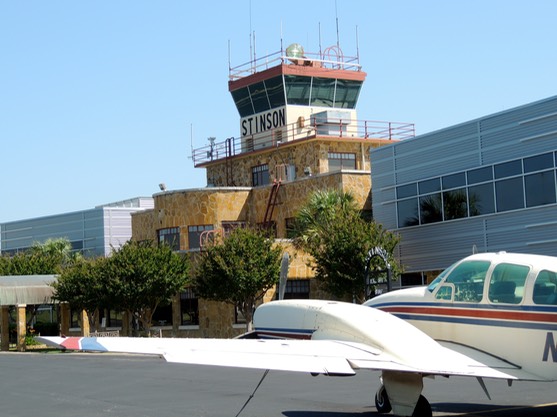
Along with the EAA’s program, there will also be static aircraft displays from a number of other aviation affiliated programs such as: Women in Aviation, Civil Air Patrol, DPS (helicopter), City of San Antonio (helicopter), EAA aircraft, Bird Dog Association Aircraft, U.S. Army and Air Force and the Texas Air Museum that is located on the airport. These organizations will exhibit their role in the future for aviation.
Other events later in the year will include the 4th of July, when the Commemorative Air Force (CAF) will exhibit several World War II vintage aircraft such as the Yellow Rose B-25 Mitchell light bomber, AT-6 Texan Trainer, and more. Several special guests will be honored. Veterans Day will also be celebrated with aircraft displays and special guests being honored. There will be several Fly-ins throughout the year by a variety of aircraft associations.
While Stinson Field has craved out a place in history, it is not standing still; it is continuing to offer a place for the future to make new history. For this reason the City of San Antonio and all of the South Central Texas will have a yearlong celebration of what once was, and what will be.
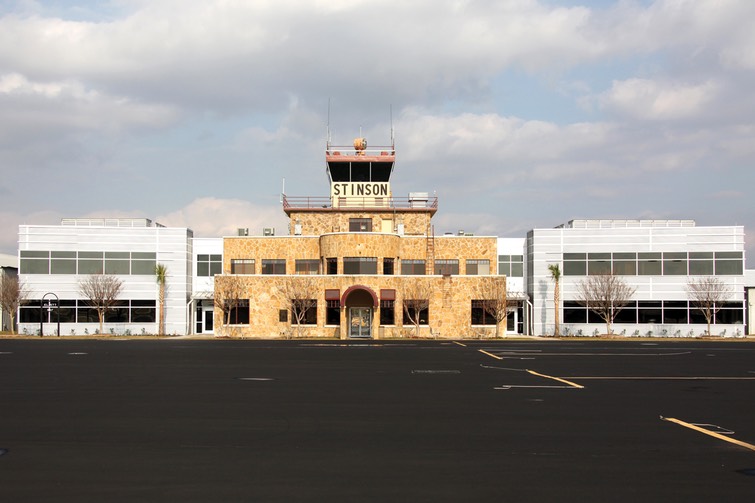
Even though Stinson Field Celebrates it's Centennial, it also looks to the future